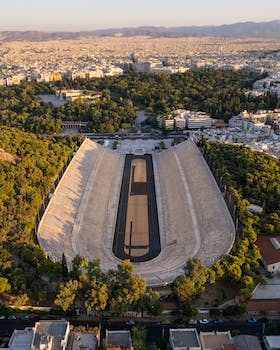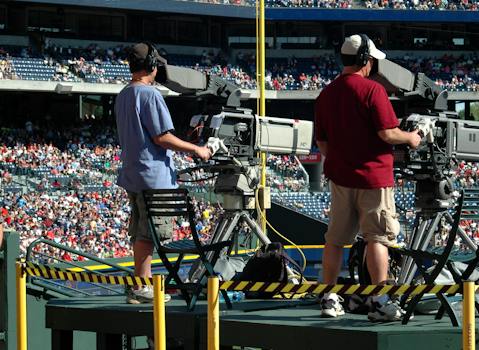

-
Table of Contents
Unearthing the untold stories of Dodger Stadium's past.
Introduction
Dodger Stadium, located in Los Angeles, California, is widely known as one of the most iconic baseball stadiums in the United States. However, behind its grandeur and popularity lies a painful history that cannot be overlooked. The construction of Dodger Stadium in the 1950s resulted in the displacement of thousands of residents from the surrounding communities, predominantly low-income Mexican-American families. This act of urban renewal, driven by the desire for economic development and urban revitalization, had a profound impact on the affected communities, leaving a lasting legacy of pain and injustice.
The Displacement of Chavez Ravine Residents
The Painful History Behind Dodger Stadium
The construction of Dodger Stadium, the iconic home of the Los Angeles Dodgers, is not without controversy. Behind its grandeur lies a painful history of the displacement of Chavez Ravine residents. This section delves into the events that unfolded, shedding light on the impact it had on the community.
In the early 1950s, the city of Los Angeles embarked on an ambitious urban renewal project. Chavez Ravine, a predominantly Mexican-American neighborhood, was targeted for redevelopment. The plan aimed to eradicate what was perceived as a blighted area and replace it with modern housing and public facilities. However, this vision came at a great cost to the residents of Chavez Ravine.
The city began acquiring properties through eminent domain, a legal process that allows the government to take private land for public use. Many residents were forced to sell their homes, often at below-market prices, and relocate elsewhere. Some families had lived in Chavez Ravine for generations, and the loss of their homes was devastating.
Resistance to the displacement was met with force. Activists who fought to preserve their community were labeled as troublemakers and communists. The city, backed by powerful interests, painted a picture of Chavez Ravine as a dangerous slum that needed to be eradicated. This narrative further marginalized the residents and justified their removal.
As the urban renewal project progressed, the city's plans took an unexpected turn. In 1957, the Brooklyn Dodgers, a beloved baseball team, announced their move to Los Angeles. The city saw an opportunity to combine the urban renewal project with the construction of a new stadium for the Dodgers. Chavez Ravine became the chosen site for Dodger Stadium.
The city's decision to build a stadium on the land that had been taken from its residents added insult to injury. The promises of modern housing and public facilities were replaced by a sports venue that would benefit the city and its new baseball team. The residents of Chavez Ravine were left with nothing but memories of their lost homes.
The construction of Dodger Stadium began in 1959, and it was completed in 1962. The stadium's opening marked a new era for the Dodgers and their fans, but for the former residents of Chavez Ravine, it was a painful reminder of their displacement. The stadium stood as a symbol of the injustice they had endured.
Over the years, efforts have been made to acknowledge and rectify the wrongs committed against the residents of Chavez Ravine. In 2007, the Los Angeles City Council issued a formal apology for the displacement, recognizing the pain and suffering caused by the urban renewal project. The apology was a step towards healing the wounds of the past, but it could never fully undo the damage that had been done.
Today, Dodger Stadium stands as one of the most iconic sports venues in the world. Its history, however, serves as a reminder of the human cost behind its construction. The displacement of Chavez Ravine residents remains a painful chapter in the city's history, one that should not be forgotten. As we enjoy the excitement of a baseball game at Dodger Stadium, let us also remember the lives that were uprooted and the community that was lost.
Racial Discrimination in the Construction of Dodger Stadium

The Painful History Behind Dodger Stadium
Racial Discrimination in the Construction of Dodger Stadium
Dodger Stadium, located in Los Angeles, is one of the most iconic baseball stadiums in the United States. It has been the home of the Los Angeles Dodgers since 1962 and has witnessed countless memorable moments in baseball history. However, behind its grandeur lies a painful history of racial discrimination during its construction.
In the late 1950s, the city of Los Angeles was determined to bring a Major League Baseball team to the West Coast. The Brooklyn Dodgers, led by owner Walter O'Malley, were enticed by the prospect of a new stadium and the opportunity to tap into the growing market of California. The city offered O'Malley a prime location in Chavez Ravine, a predominantly Mexican-American neighborhood.
To make way for the construction of Dodger Stadium, the city embarked on a massive urban renewal project that involved the forced eviction of thousands of residents. Many of these residents were low-income Mexican-American families who had lived in Chavez Ravine for generations. They were promised fair compensation and relocation assistance, but the reality was far from it.
The city used eminent domain to acquire the land, arguing that it was for the greater public good. However, the process was marred by racial discrimination. The predominantly white city officials viewed the Mexican-American community as undesirable and saw the urban renewal project as an opportunity to rid the area of what they considered a blight.
The residents of Chavez Ravine were given meager compensation for their homes, often far below market value. Many families were forced to leave their tight-knit community and were left with no choice but to relocate to unfamiliar neighborhoods. The emotional toll of losing their homes and being uprooted from their community was devastating.
Furthermore, promises of relocation assistance were not fulfilled. Many families struggled to find suitable housing, and some ended up in substandard living conditions. The city's lack of support for these displaced families only added to their suffering.
The racial discrimination in the construction of Dodger Stadium did not end with the forced evictions. The construction workforce was predominantly white, with very few opportunities for minority workers. This further perpetuated the racial inequalities that were already deeply ingrained in society.
The impact of the construction of Dodger Stadium on the Mexican-American community of Chavez Ravine cannot be overstated. It was a blatant display of racial discrimination and a violation of the rights of these families. The scars left by this painful history still linger today.
In recent years, there have been efforts to acknowledge and address this dark chapter in Dodger Stadium's history. The Los Angeles Dodgers organization has worked to engage with the community and provide support to those affected by the forced evictions. Additionally, there have been calls for reparations and recognition of the injustices committed.
Dodger Stadium may be a beloved landmark for baseball fans, but it is essential to remember the painful history that lies beneath its surface. The racial discrimination in its construction serves as a reminder of the injustices that marginalized communities have faced throughout history. It is a call to action to confront and rectify these past wrongs, ensuring a more equitable future for all.
The Legacy of Chavez Ravine and Dodger Stadium
The Legacy of Chavez Ravine and Dodger Stadium
Dodger Stadium, located in Los Angeles, is one of the most iconic baseball stadiums in the United States. It has been the home of the Los Angeles Dodgers since it opened its doors in 1962. However, behind its grandeur and popularity lies a painful history that is often overlooked.
The story begins in the late 1940s when the city of Los Angeles embarked on an ambitious urban renewal project known as the Chavez Ravine redevelopment plan. The plan aimed to transform the impoverished neighborhood of Chavez Ravine into a modern residential community. However, this plan would ultimately lead to the displacement of thousands of families and the destruction of a tight-knit community.
The residents of Chavez Ravine were predominantly Mexican-American and had lived there for generations. They had built a vibrant community with schools, churches, and businesses. However, their homes were deemed "blighted" by city officials, who saw the area as a prime location for redevelopment. The residents were promised new, modern housing in the same neighborhood once the project was completed.
In 1950, the city of Los Angeles acquired the land through eminent domain, forcibly evicting the residents of Chavez Ravine. Many families were given inadequate compensation for their homes and were left with no choice but to leave. Some resisted, refusing to leave their homes, but were eventually removed by force.
Years passed, and the redevelopment plan faced numerous setbacks. The promised housing never materialized, and the land remained vacant. In the meantime, the city of Los Angeles was in desperate need of a new baseball stadium. The Brooklyn Dodgers, a beloved baseball team, were looking to relocate to the West Coast, and Los Angeles saw this as an opportunity to revitalize the city.
In 1957, the city sold the land to the Dodgers' owner, Walter O'Malley, at a fraction of its market value. The construction of Dodger Stadium began shortly after, and it was completed in 1962. The stadium was hailed as a modern marvel, with its sweeping views of downtown Los Angeles and state-of-the-art facilities. It quickly became a beloved landmark in the city.
However, the construction of Dodger Stadium came at a great cost. The displacement of the residents of Chavez Ravine and the destruction of their community cannot be ignored. The pain and trauma experienced by these families are part of the stadium's legacy, a legacy that is often overshadowed by the excitement and glamour of baseball.
In recent years, there has been a growing recognition of the injustices committed during the construction of Dodger Stadium. Efforts have been made to honor the memory of Chavez Ravine and its former residents. A memorial plaque was installed near the stadium, acknowledging the history of the land and the community that once thrived there.
The painful history behind Dodger Stadium serves as a reminder that progress often comes at a cost. It is important to remember and acknowledge the past, even as we enjoy the present. Dodger Stadium may be a symbol of baseball excellence, but it is also a symbol of the displacement and loss experienced by the residents of Chavez Ravine.
Q&A
1. What is the painful history behind Dodger Stadium?
Dodger Stadium was built in the 1950s on land that was forcibly taken from a predominantly Mexican-American community called Chavez Ravine. The residents were forcefully evicted from their homes, leading to a loss of community and cultural heritage.
2. How did the construction of Dodger Stadium impact the community?
The construction of Dodger Stadium resulted in the displacement of over 1,000 families from Chavez Ravine. Many residents were forcibly removed from their homes, which caused significant emotional and financial distress for the affected community.
3. What is the significance of understanding the painful history behind Dodger Stadium?
Understanding the painful history behind Dodger Stadium is important as it sheds light on the injustices faced by marginalized communities during urban development projects. It serves as a reminder of the need to consider the social and cultural impacts of such projects and to strive for equitable development in the future.
Conclusion
In conclusion, Dodger Stadium has a painful history that involves the displacement of thousands of residents from the Chavez Ravine neighborhood. The construction of the stadium resulted in the destruction of a vibrant community, causing significant emotional and social upheaval for those affected. The painful history behind Dodger Stadium serves as a reminder of the complex and often unjust consequences of urban development projects.










